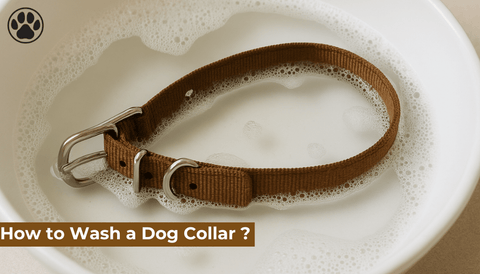
Is a Shock Collar Bad for Dogs ?
of reading - words
Training a dog can be challenging, especially when you're dealing with persistent behavior issues like barking, jumping, or pulling. Some dog owners consider using a shock collar as a quick solution—but is a shock collar bad for dogs?
This question has sparked debates among pet professionals, trainers, and animal lovers for decades. In this article, we’ll explore what shock collars are, how they work, the risks and ethical concerns associated with them, and whether there are safer, more humane alternatives.
What Is a Shock Collar?
A shock collar—also known as an e-collar or electronic training collar—is a device worn around a dog’s neck that delivers a mild electric shock when activated by a remote or sensor. It’s primarily used for:
-
Curbing excessive barking
-
Teaching recall or boundary training
-
Discouraging unwanted behaviors
Many modern versions allow adjustable stimulation levels and may include vibration or sound settings as alternatives to electric shock.
Is a Shock Collar Bad for Dogs?
The short answer is: It depends on how and why it’s used—but risks are real.
While some trainers argue that shock collars can be effective when used correctly, many veterinarians and animal behaviorists warn against them due to their potential to cause physical pain, stress, and fear-based behavior.
Let’s break down the concerns.
1. Physical Discomfort or Pain
Even on low settings, the sensation from a shock collar can be uncomfortable. Repeated use, or improper placement, may cause:
-
Skin irritation or burns
-
Muscle twitches or spasms
-
Increased heart rate or anxiety
2. Fear-Based Training Consequences
Unlike reward-based training, shock collars rely on negative reinforcement or punishment, which can lead to:
-
Fear or distrust of the owner
-
Aggressive responses or reactivity
-
Confusion if the dog doesn’t understand what behavior triggered the shock
This approach can damage the human-animal bond and create long-term behavioral issues.
3. Risk of Misuse
One of the biggest problems is that many dog owners are not trained in proper e-collar usage. Without understanding timing, behavior cues, or appropriate levels of stimulation, the collar becomes a blunt and harmful tool.
For example, shocking a dog for barking when they’re reacting to danger or fear may suppress the behavior temporarily—but the underlying emotion remains.
Are There Humane Alternatives?
Yes—and they’re highly effective. Positive reinforcement-based training focuses on rewarding good behavior rather than punishing bad behavior. Tools and techniques include:
-
Clicker training
-
Treat or toy rewards
-
Leash training harnesses
-
Verbal praise and repetition
-
Interactive play and redirection
These methods build trust and consistency while reducing stress. Studies show that positive reinforcement yields better long-term results and strengthens the relationship between dog and handler.
The Role of Professional Trainers
If you're struggling with behavioral issues, working with a certified dog trainer or animal behaviorist is far more effective than relying on a shock collar. A professional can help identify root causes, create a custom training plan, and teach techniques suited to your dog’s personality and breed.
They may recommend a temporary e-collar only as a last resort, and even then, under strict supervision and proper use protocols.
When Shock Collars Are Used Responsibly
Some trainers argue that under very specific circumstances—such as off-leash recall in dangerous areas or stubborn behavior unresponsive to other methods—a shock collar can serve as a tool of last resort. However, this should only happen:
-
After positive reinforcement has failed
-
With expert guidance
-
Using the lowest effective setting
-
With clear behavior marking and timing
Still, these scenarios are rare and should never be the starting point of training.
Explore Safer Collar Options
If you're looking to upgrade your dog’s collar or training gear, consider starting with a safe, functional, and stylish collar. We offer a wide collection of dog collars that are gentle on your dog’s neck, designed for durability, and perfect for pairing with positive reinforcement training methods. Choose from everyday basics to premium reflective or padded models.
Your dog deserves a collar that prioritizes comfort, control, and communication—without relying on fear or force.
Frequently Asked Questions
Is a shock collar bad for dogs long-term?
Yes, long-term use may result in chronic stress, anxiety, or aggression, especially if used improperly or excessively.
Do vets recommend shock collars?
Most veterinarians and certified trainers do not recommend shock collars, favoring positive reinforcement methods instead.
Are shock collars illegal?
Shock collars are banned or restricted in several countries (including parts of Europe) due to ethical concerns. They remain legal in many U.S. states but are controversial.
What can I use instead of a shock collar?
Try harnesses, clicker training, or positive reinforcement tools. Consult a trainer for guidance specific to your dog’s needs.
Can a shock collar hurt my dog?
Yes, if misused or overused. Even low-level shocks can cause discomfort and fear. Avoid if you're not trained in how to use it responsibly.




